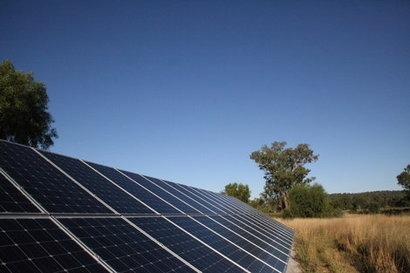
Developers have long complained about excessive waiting times for connections, alongside the consequent economic damage. In some extreme cases, they have been told to wait until the 2040s, although periods of seven to ten years are more common. The situation has arisen from rules intended to keep power bills low, though have had the opposite effect by restricting the growth of cheap renewable energy.
Accordingly, distribution network operators (DNOs), which sit between the high-voltage transmission grid and consumers, are under government orders to resolve the problem, due to these delays impeding investment, net zero and the imperative to cut bills, alike.
Aside from promising to spend more on infrastructure, DNOs are also changing the way that the queue for connections is managed, pushing up the projects considered most likely to go ahead. Queues to connect to the grid, both low and high voltage, amount to 500 GW, according to a recent estimate by grid consultancy Roadnight Taylor.
An aspect of these reforms, being conducted by the DNOs and the National Grid Electricity System Operator, is the ‘Technical Limits’ programme, begun at the end of last year. This is intended to allow electricity supply assets to connect before large-scale reinforcement of the transmission grid has been completed. However, this will only work if output is kept within certain bounds, meaning that it may be curtailed until upgrades are ready, which may not be until the 2030s.
Solar Energy UK Chief Executive Chris Hewett will be discussing these issues with EAC from 14.15 today, as part of the MPs’ inquiry into enabling sustainable electrification of the UK economy. Grid Commissioner Nick Winser and other senior figures will be covering similar grounds before the Energy Security and Net Zero Committee, at a session beginning at 14.00.
The lowest degree of curtailment that Solar Energy UK has seen is 63 percent, in return for the connection date being brought forward by only a year. In some situations, developers have been told that this limit is zero, with not a single solar-powered electron being allowed to flow into the grid.
Grid consultancy Novogrid has seen 50 such messages over the past three months, all with curtailment above 90 percent.
As an example, National Grid Electricity Distribution, which operates the low-voltage grid in the Midlands and other areas, provided a report stating that a 49.9 MW battery system would be subject to 100 percent curtailment, at every time of the day and throughout the year.
“But the good news is that they could connect now in 2028 instead of 2032” said Keir Spiller, Managing Director of Certus Utility Consulting, writing on LinkedIn. “Who has decided that connections with these levels of curtailment should even be offered as solutions? It feels like serious box ticking by all transmission and distribution operators with zero regards for what is actually achievable,”
“You couldn’t make it up” said Chris Hewett, Chief Executive of Solar Energy UK. “The idea of offering a grid connection that you can’t use and calling that some sort of success is absurd. It is like being told you can open a shop on the High Street, as long as you keep the doors locked. This is bizarre behaviour, and an apparent attempt by the DNOs to make it look like they are doing something while they still fail to invest in vital upgrades.”
Remarkably, the situation gets worse. Solar Energy UK has heard rumours of a solar project that would only be allowed to supply power at night.
According to experts, the root cause is preposterous assumptions about how battery and solar projects operate. In one case, a solar farm was assumed to be exporting at maximum capacity at 9pm in January. It is also common to assume that solar farms and battery systems would export at maximum simultaneously, which would not happen in practice: the solar farm would charge the storage system in the day, to sell the power after sundown.
Paul Manning, Co-chief Executive of NovoGrid, said that the situation was the consequence of the “utter lack” of people trained to conduct power flow analysis, “which is the gold standard for this kind of work.” Although the money is good – with £72,000 a year being offered for a network modeller with limited experience – a high pressure working environment can lead to them leaving DNOs for consultancy roles after only a few years, he said. Nor can skilled workers be easily attracted from abroad, as the shortage is global.
So, rather than using dedicated network modelling software, grid operators have fallen back on a far more simplistic calculation system, based on Microsoft Excel. This delivers exceedingly cautious results, which in turn avoids potential liability: if required curtailment turns out to greater than estimated, DNOs may be liable to pay compensation.
“This is why they use such ultra-conservative assumptions to ensure that they can never be wrong” added Mr Manning.
The structural nature of the problem means that solutions are limited, beyond actively seeking to recruit and train new engineers. However, there are suggestions that the Department for Energy Security and Net Zero, or energy regulator Ofgem, could intervene. This could be through requiring that grid operators accept some risk, possibly under insurance, and amend the “wildly out of date” profit control regime RIIO-ED2, said Manning, as it does not provide an appropriate fee structure to respond to greatly increased demands for connections. The scheme only entered into force last year. Some DNOs are also putting more data in the public domain so that developers themselves can calculate the risks more accurately. It should be a requirement for all DNOs to do this.
Both the skills agenda and securing swifter access to the grid are key themes of the Solar Taskforce, which is due to provide its roadmap for reaching 70 GW of solar power capacity in the spring.
For additional information:

